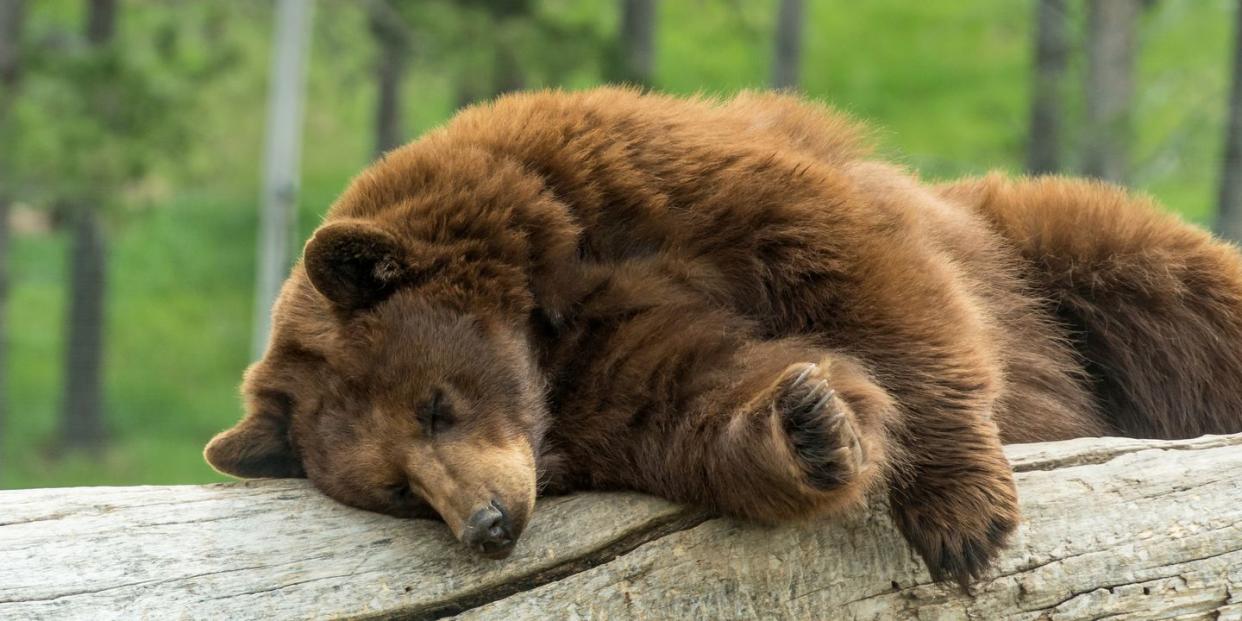It Would Be Pretty Cool to Hibernate

Bear and squirrel hibernation offer exciting paths for research into human hibernation.
Near-future human travel to Mars is one potentially huge application for findings like these.
Induced cold also has more feasible medical applications, like increasing viability of organs.
The New York Times reports researchers are exploring ways bear hibernation could change human approaches to healthcare or even space travel. Times fellow Devi Lockwood talked with evolutionary biologists about how bears change most in their fatty tissues—their other tissues like muscle barely change, let alone the level of atrophy or even bedsores that would likely afflict a human who tried it. Scientists said changing levels of genetic activity are likely responsible.
Scientists have studied squirrel hibernation for its implications for human organ donation. Lockwood talked with the doctor behind this high-profile study, which Gizmodo covered in 2018. The original paper, published in the journal Cell, explained that the secret lay in cold tolerance, because hibernating animals would die of exposure or hypothermia without special features in their biology: “[T]hese treatments significantly improved microtubule integrity in cold-stored kidneys, demonstrating the potential for prolonging shelf-life of organ transplants.”
That’s the thing about hibernation: It’s not a fun choice animals make, but a system that allows them to live despite situations when they would otherwise die. Squirrels and bears continue to exist arguably because of hibernation alone. When it comes to biomimetics—literally, imitation of life in technology—hibernation offers even more than the usual potential value.
Organ transplant is much more grounded than the other major route for hibernation technology: space travel enabled by human hibernation. This happens all the time in science fiction, with a groove so well worn that we can make relatable movies and TV shows about when hibernation technology fails.
In a 2017 essay called “Is Human Hibernation Possible?” Universe Today’s Fraser Cain cited progress in therapeutic hypothermia, where patients have been induced into cold comas for up to 14 days in order to stave off life-threatening conditions. NASA has studied torpor for years and continues making steps forward in its research; every new finding about animal hibernation represents a potential new avenue to continue that research.
Of all the sci-fi ideas of how we’ll end up catapulting to Alpha Centauri, hibernation is the most feasible one. Many sci-fi writers rely on something like a portal system, where ships go through a wormhole or some other fantasy zapper where they end up popping out the other side. Some propose hibernation in the sense that travelers are extremely sedated in order to undergo a form of travel that’s traumatic for the wakeful. Gene therapy to tune humans more toward existing large mammals is, at least for now, much more model-able and grounded.
Lockwood draws this conclusion in her Times piece, too. Organizations have put astronaut-adjacent people in long-term isolation to test their ability to stay emotionally cool for a long time, and thousands of people applied to take the real planned one-way journey to Mars at some point in the future. But that hasn’t solved logistical problems like how to continue feeding them for that entire trip, or how to even build a space-worthy craft big enough to carry everything they need to try to build a settlement. Hibernation could relieve pressure to plan the logistics for both a waking years-long trip and what happens once they arrive on Mars.
You Might Also Like

